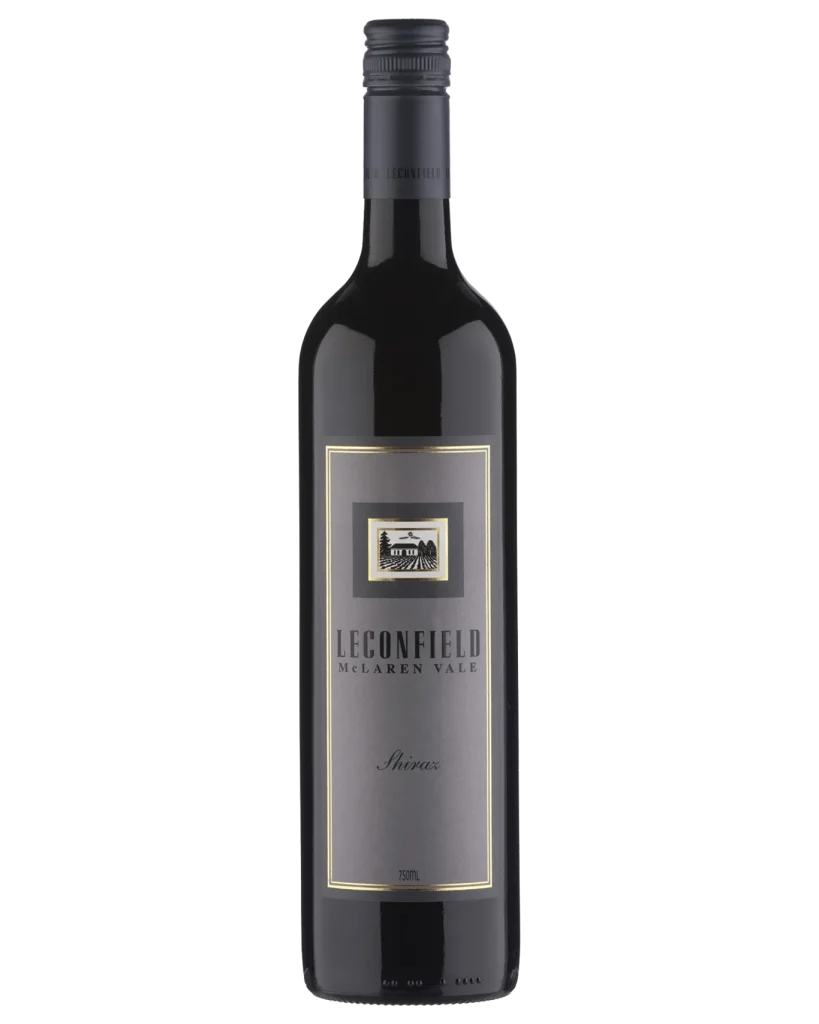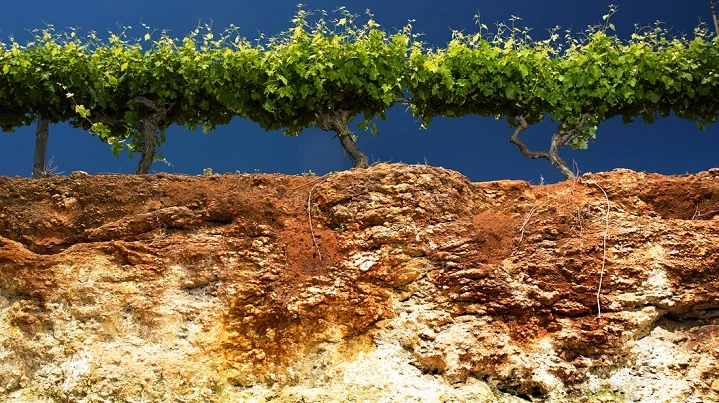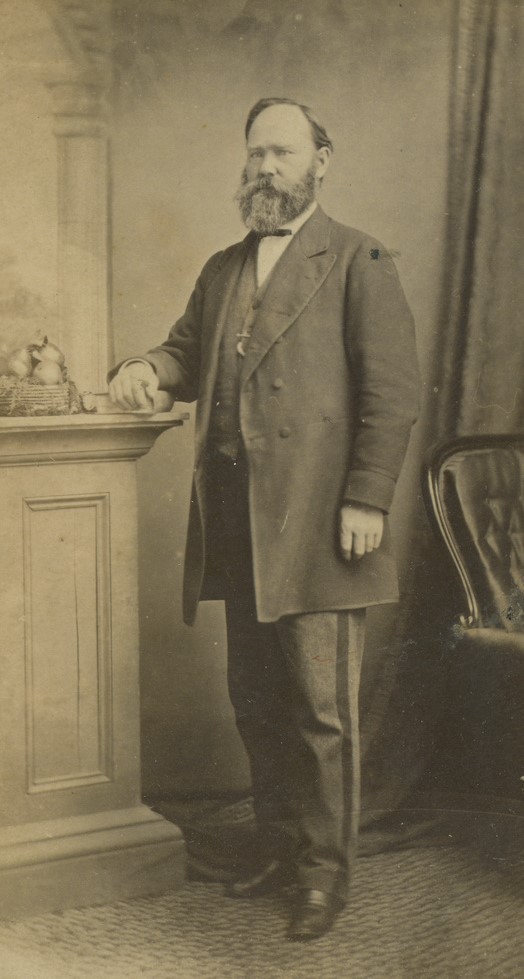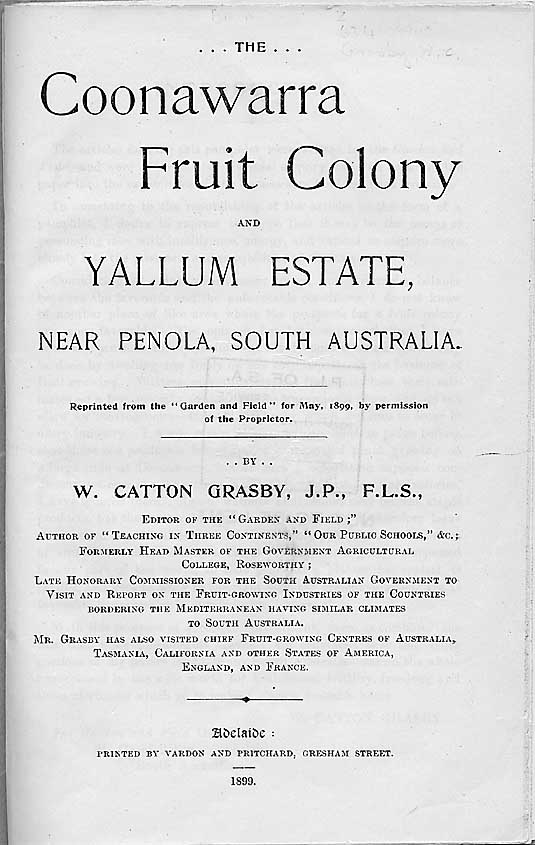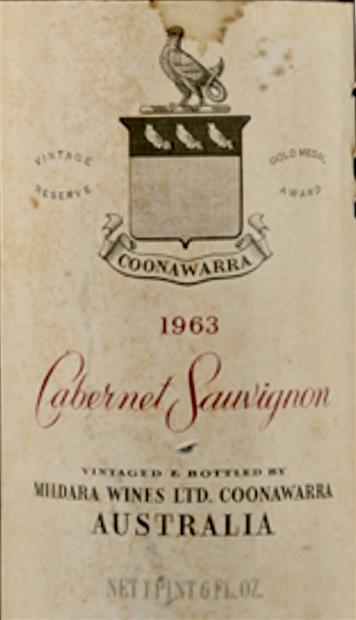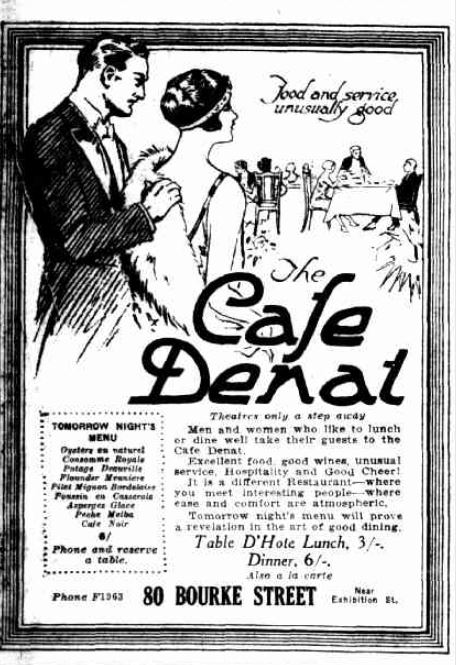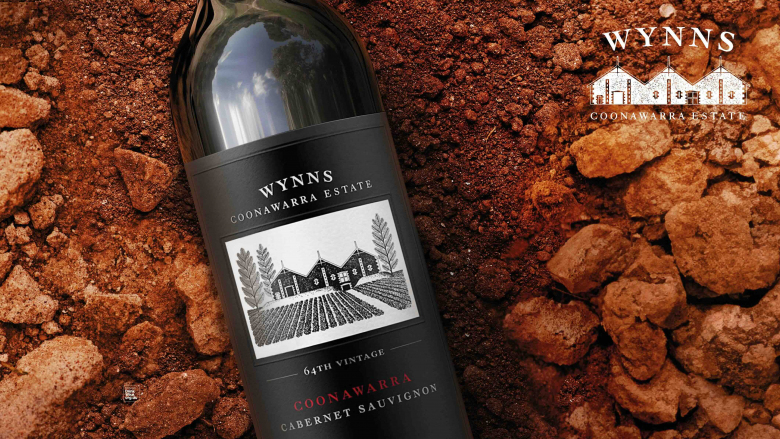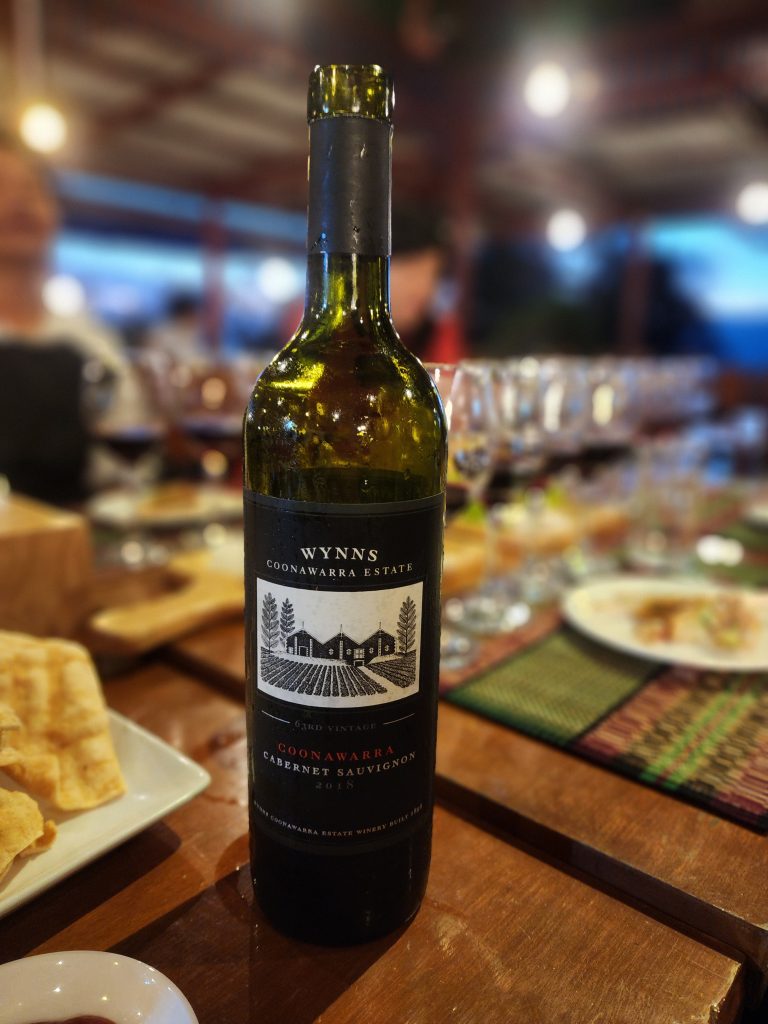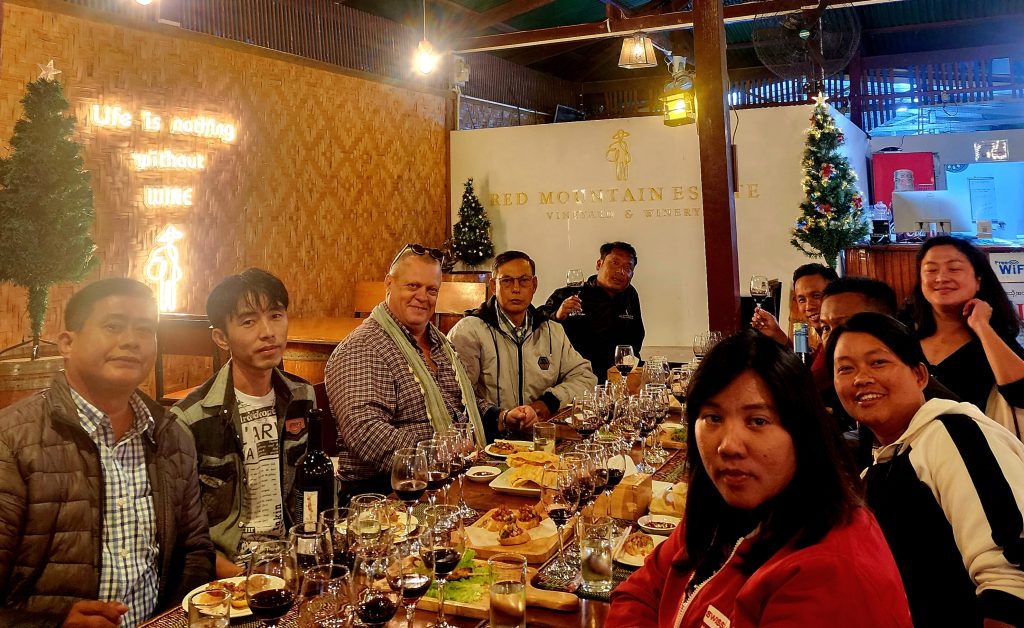Wynns of Change
The 95
I have a great fondness for the Coonawarra region, heavily influenced by the fact that I worked many vintages there at Leconfield winery in the ’90s. I would work the harvest each year in the winery and had the privilege of working with a great senior winemaker and winemaking team. This team produced a number of award-winning wines that would go on to have a profound effect on my life and career.
My first vintage in the Leconfield Coonawarra winery was 1995, a couple of years later -when we released our Shiraz from that year- it had a remarkable run at the Royal South Australian Wine Show, collecting gold medals and trophies including Best Wine of the Show and Winemaker of the Year for our senior winemaker, Ralph Fowler. As Ralph and I drove up for the show that morning, with the mobile phones going mad ith calls and texts, live TV and the press pack waiting, it was a surreal moment in time, one that I will never forget and always treasure.
Fast forward ten years, I am living in Thailand and have flown down to Perth as a guest of the Western Australian Government, to speak at an industry conference. A colleague from Perth took me to dinner and surprised me when he produced a bottle of the now famous, and extremely rare 1995 Leconfield Coonawarra Shiraz. The wine was in magnificent condition, the drinking a visceral communion; to see it presenting so well, and ageing so gracefully a decade on had an acute effect on me emotionally. Memories of that time came flooding back and brought tears to my eyes; it was one of the most moving glasses of wine I think I will ever drink.
The Thin Red Line
The Coonawarra region is famous for its terra rossa soil, a bright, brick-red coloured, oxidized soil over ancient, white and cream, lacustrine limestone, it also has a cool climate with a ripening window perfectly suited to the thicker-skinned red wine grape varieties, Shiraz and Cabernet Sauvignon.
The white sub-soil is an ancient, crustacean-filled seabed and the red soil -which sits up on small ridges- is older, oxidized coastline strips. The largest strip in the southeast basin area is the Coonawarra Strip, that runs for 15 kilometers north to south and is just two kilometers wide east-to-west. Almost all of the major wine-producing giants in the country have managed to squeeze themselves in here somewhere, making it the most famous strip of vineyard soil in the country.
This mineral-rich soil profile, which offers good drainage in the wet season and retains moisture well in the dry season, along with the pure underground aquifer and long cool ripening seasons all contribute to making the region the finest in the country for the production of world-renowned Cabernet Sauvignon wines. These wines are unique for their intensity and structure, elegant wines with beguiling, seductive depth and power.
The Penola Fruit Colony
John Riddoch was born in Aberdeenshire, Scotland, he arrived in Victoria, Australia with his parents and family in 1851, settling in Newtown, Geelong. He headed for the Ovens River goldfields and, by all accounts he was very successful. He returned to Geelong and set himself up as a wine merchant and store owner. In 1861, he purchased Yallum Park Estate, a sheep and cattle station near Penola.
In partnership with his brother George, he bought up extensive tracts of land in the southeast of South Australia and by 1891 they owned 30,000 hectares of pastural land. This would eventually include Glencoe station, which covered 21,000 hectares and held 53,000 sheep, 3,500 cattle and 300 horses. The property also featured a magnificent woolshed, which today is held by the National Trust.
It has been recorded that as early as 1867 he was already interested in the idea of growing fruit and wineg rapes. It has also been suggested that he probably read Jules Guyot’s 1865 book “Culture of the Vine and Wine Making” which was translated into English by Victorian winegrower Ludovic Marie.
John Riddoch enjoyed great success as a wool exporter, with his merino wool being considered some of the finest in the world. He attended the huge Colonial and Indian Exhibition of 1886, held in London. There, he noted the success of Australian wine exports to Great Britain.
Riddoch soon had visions of a thriving, self-sufficient community based on grape growing, orcharding and winemaking, in South Australia’s southeast. The Adelaide-to-Melbourne express train and the Mount Gambier railway line, completed in 1887 -partly running through Riddoch-owned land- now created the opportunity to transport perishable goods to the big city markets of Melbourne and Adelaide.
In 1890, he established the Penola Fruit Growing Colony, which was renamed Coonawarra in 1897, the indigenous language word for honeysuckle. Riddoch identified 464 hectares of terra rossa land for the in the ‘Hundred of Comaum’ and it was surveyed up to encompass 110 x 4-hectare blocks. Payment was ten pounds per block over ten years, with an option to buy outright after three, if plantings and crop yields were being met.
In the first allocation of blocks, 355 hectares were taken up by 26 investors, primarily from Adelaide and Victoria and these became known as ‘Blockers’. It was decided that the best fruits to plant were apples, peaches, apricots, prune plums and pears; also vines for champagne, claret and other light wines. Within a year 95,000 vines and 10,000 fruit trees had been planted on 52 hectares. In January of 1892, the first consignment of fruit and vegetables was sent to Penola by James Ah Suee, an enterprising Chinese immigrant and market gardener. Riddoch himslef planted 16 hectares of vines and his first vintage was in 1895.
The grapes planted were mostly Shiraz and Cabernet Sauvignon, for the export of claret-style wines to Britain and the countries of the empire. However, Riddoch’s passing in 1901, along with two world wars, global economic depression and a local appetite for warm climate, fortified wines saw, the enterprise struggled and fell over during next fifty years. In the end -of the original ‘Blockers’ era growers- only the Redman family survived as a producer of wine grapes. Bill Redman famously quipped, describing the history of the region, “from 1890 to 1945 you can write failure across the face of Coonawarra.”
The Red Book – Rouge Homme to Redman
Redman arrived in Coonawarra as a fourteen your old boy in 1901, and began working for John Riddoch, learning the craft of winemaking from Ewan McBain. By 1908, he had purchased sixteen hectares of planted vineyard for himself; selling the first crop of grapes to Riddoch, to help pay for the land. He made his first wine the following year, selling most of it as bulk wine. In 1937, son Owen joined the winemaking team, while the wines were still being sold off in bulk.
The 1952 vintage saw the first Redman family wine released, under the Rouge Homme label, a blend of Cabernet Sauvignon and Shiraz. The Redman’s sold the Rouge Homme winery and label in 1965 and Bill Redman retired leaving a legacy that inspired many then and to this day, to seek to grow grapes and produce wines in the region. In the meantime Owen Redman and his wife Edna purchased a 16-hectare block from Arthur Hoffman, who had long been one of the family’s grape suppliers, his land admired for the quality of its fruit.
Owen and Edna started the Redman Wine label in 1966, releasing a Redman Claret. From 1966 to 1976, their holding gradually increased from 16 to 36 hectares. The only varieties grown were Shiraz and Cabernet Sauvignon. Owen continued to make the wines until 1982, when sons Bruce, and Mal assumed winemaking responsibilities.
Today, the Redman family continues to grow grapes and make wine in the traditions initiated by Bill Redman over one hundred years ago, and with the next generation in place, this tradition and family success look certain to continue, for many more years to come.
The Long March
The long road to popularity and global success for this wines of the red strip of land known as Coonawarra had its beginnings back in 1946, when Woodley Wines purchased the Riddoch wine cellars in Coonawarra. Woodley had been purchasing bulk wines from the Redman family since the 1920s, and asked Bill to make the wines. The resulting wines were known as the ‘Treasure Chest Series’, and these are the first wines to use the name Coonawarra on the label.
Also influenced by Bill Reman’s wine, Mildara wine’s Managing Director, Ron Haselgrove soon purchased 12.5 hectares in Coonawarra. The 1963 Mildara Cabernet from Coonawarra fruit became quite famous in winemaking circles under the nick name, ‘Peppermint Pattie’ so called for the ‘mint/menthol’ character in the wine.
These wines, along with Rouge Homme, and notably Penfolds Bin 68, started to perform well on the national show circuit and set the foundations for Coonawarra’s long march from the wilderness, into the national spotlight.
In 1951, The John Riddoch winery was again sold to community figure, ardent Zionist and successful wine merchant, Samuel Wynn (1891–1982). His biographer, David Dunstan, described him as “tenacious” and “courageous” in both his community involvement and in business dealings.
Samuel Wynn lost sixty-seven members of his extended family in the Holocaust. He was a strong Zionist and, according to Dunstan, before the establishment of the State of Israel in 1948, he made ten trips to Palestine carrying small arms into the country at his peril.
The Wynn Dynasty
Even though Samuel Wynn received a religious education and attended a Yeshivah in Nova Minsk for a short period, by the age of fourteen he joined the family wine business in Lodz, Poland. He married in 1912 and to escape military service and he migrated to Australia -arriving on the 12th of November 1913.
After working for a time as a cellar hand, Wynn purchased his first wine merchant business in 1918, soon after he was naturalized, and granted a license to sell ‘Colonial Wine’. Within half a dozen years, he had three stores and was soon selling wine under his own label.
The business continued to enjoy success and expand with the acquisition of Café Denat in 1920. Wynn formed a partnership with the restaurant’s head waiter George Hildebrandt who in 1924, became manager of one of Wynn’s new retail wine stores. Samuel then moved the Cafe into the rooms above his Bourke Street shop, which had previously been the family home.
In 1928, Rinaldo Massoni leased the restaurant and changed its name to Il Florentino, also changing the cuisine from French to Italian. In 1954, the license was changed from an Australian Wine license to a restaurant license, so that the previously illegally sold imported spirits and wines could now be sold out in the open. Today Fiorentino -under the brilliance of owner/chef Guy Grossi- continues as a historic and iconic Italian restaurant in Melbourne.
Samuel’s son, David Wynn was to put it simply, one of the greatest contributors to the Australian wine industry in its long history. David was sent to study bacteriology and accountancy at the University of Adelaide and winemaking at the Romalo Magill wine cellar, in preparation for following in his father’s footsteps. When World War II broke out David Wynn enlisted in the Royal Australian Air Force. After the war he returned to Melbourne to take over the running of the family business.
In 1950, against his father Samuel’s wishes, David Wynn purchased -for the family business- John Riddoch’s old winery, (still called Chateau Comaum) and renamed it Wynn’s Coonawarra Estate. It was noted that both father and son had few expectations of it turning a profit.
1948, David Wynn established Australia’s first contour-planted vineyard (Modbury, South Australia) and in 1951 he introduced the term ‘Estate’ to the Australian wine industry, with the renaming of the Riddoch winery and vineyards.
He commissioned Melbourne artist Richard Beck to produce a woodcut of the winery facade. This illustration has appeared on every Wynns Coonawarra Estate label since, making it one of Australia’s most enduring and recognized wine symbols.
The Wynns wine company produced wines for all segments of the market and in 1970, purchased the exclusive rights to the Airlesflo tap, which was an integral component used in the development of the wine cask. The wine cask has become an Australian icon and a major Wynn success story. By the end of the Millennium, casks would account for around half of all domestic wine consumption.
1970, was also a landmark year for the family business as it became a public company and was listed on the stock exchange. Today it is owned by the publicly listed Treasury Wine Estates.
In 1972, David Wynne established Mountadam vineyard and winery on High Eden Ridge, naming it after his son Adam, who became the winemaker in 1984. I was a guest of Adam’s at the property and met with him many times; he produced exceptional wines and remains someone I admire enormously for his charm, wit, generosity-of-time, his vast experience and knowledge, as well as for the joy of his wines. Adam sold the property to Louis Vuitton Moet Hennessy in 2000 and is retired.
In 1993, David Wynn’s contributions to the Australian wine industry were recognized when he was awarded the prestigious Maurice O’Shea Award. He passed away in 1995.
From the mid-1950s and early 60s, through to the mid-1980s the Coonawarra wine region saw a slow and steady rise in demand for its wines, as Australians gradually developed a taste for dry red. Significant technical advances in wine production and wine transport also meant that wines were achieving much higher quality and arriving to markets in much better condition than ever before.
By the late 1980s and early 90s, cool-climate wines, Cabernet Sauvignon grapes and the Coonawarra wine region were seen as the perfect combination to make great wine, and Coonawarra wines were the hottest red tickets in town. By 1981, Wynns was the largest grower in the district, with 440 hectares under vine.
The 1982 vintage was the first release of their iconic flagship Cabernet Sauvignon wine bearing the ‘John Riddoch’ name, and in 1990 they released their super-premium Shiraz, the Michael.
1993, marked the first vintage of winemaker Sue Hodder, under then Senior winemaker Peter Douglas. In 1998, Sue would be appointed as Senior winemaker herself, a position she holds to this day. 1998, was also the year that Sue’s winemaking partner, Sarah Pidgeon joined Wynns in the winery.
However, the 1990s were not all smooth sailing for Coonawarra, as a market labour shortage and cost controls lead to the use of mechanical pruning and harvesting techniques, which soon began to take their toll in the vineyards.
As far back as 1981, when Sydney Hamilton released his Leconfield Coonawarra Cabernet Sauvignon from that year, he noted on the label that the wine was made from grapes ‘hand-picked by experienced girls’. This is a statement that has seen the label take its place in the infamous annals of quirky Australian wine label history. It was meant to acknowledge not only Sydney’s gratitude but also, given a dearth of male pickers, at finding experienced women to pick the grapes, to him it was a godsend.
In the late 1990s, the reliance on mechanical viticulture had started to take its toll, both in the vineyards and with the quality of the wines. By the turn of the century, with people like Sue Hodder leading the charge, extensive viticultural redevelopment and rehabilitation took place, along with a return to hand-pruning vines and hand-picking grapes. This saw the return to wines with more freshness, vitality and charm.
2004, saw Wynns Coonawarra Estate celebrate the 50th vintage of the iconic Wynns Coonawarra Black Label Cabernet Sauvignon. It is a majestic vintage, regarded by most critics as Coonawarra’s return to the days of producing its best wines and retaking its mantle as Australia’s finest cool-climate producer of full-bodied red wines, with serious ageing potential.
In 2016, Sue Hodder and Sarah Pidgeon were jointly named ‘Winemaker of the Year’ at the 2016 ASVO Awards for excellence; Sue was awarded ‘Women of Inspiration’ at the 2017 Women in Wine awards.
In 2016, John Riddoch Cabernet Sauvignon became one of the first Australian wines to launch through ‘La Place de Bordeaux’ and to be exclusively distributed by some of Bordeaux’s most influential negociant houses -marking a new chapter for Australian wine in the international market.
Black Label
At the winery where I make the wine, (Red Mountain Estate) I like to calibrate my team’s palate with wonderful wines from all over the world, at our monthly team dinners. This month, we tried the 2018 Wynns Black Label Coonawarra Cabernet Sauvignon, a wine I have been buying, drinking, and selling for over 30 years, but have probably not tried in nearly a decade. It was wonderful to visit a neighbour of my old stomping ground and review a wine that is as classic Coonawarra as the red strip itself.
The colour still had a vibrant glow to it, youthful.
Aromas were of blackcurrant, sage, a touch of lavender, and coffee grinds. There are also the characteristic notes of cold tea and after-dinner mint (choc/menthe), with just a touch of spice.
A creamy entry swirls onto the palate showing cassis, cherry, mint, dried herb, mocha notes and pan spices. The wine is medium-bodied with some attractive acidity and fine but firm tannin.
This is still an absolute Coonawarra classic, a benchmark wine and a wonderful reminder of just how wonderful the wines from this region were and can still be.
I loved it and the team were suitably impressed, 97/100.
Darren Gall
*In researching this article a huge debt of gratitude must be given to the wonderful work of Andrew Calliard MW, and David Dunstan.



